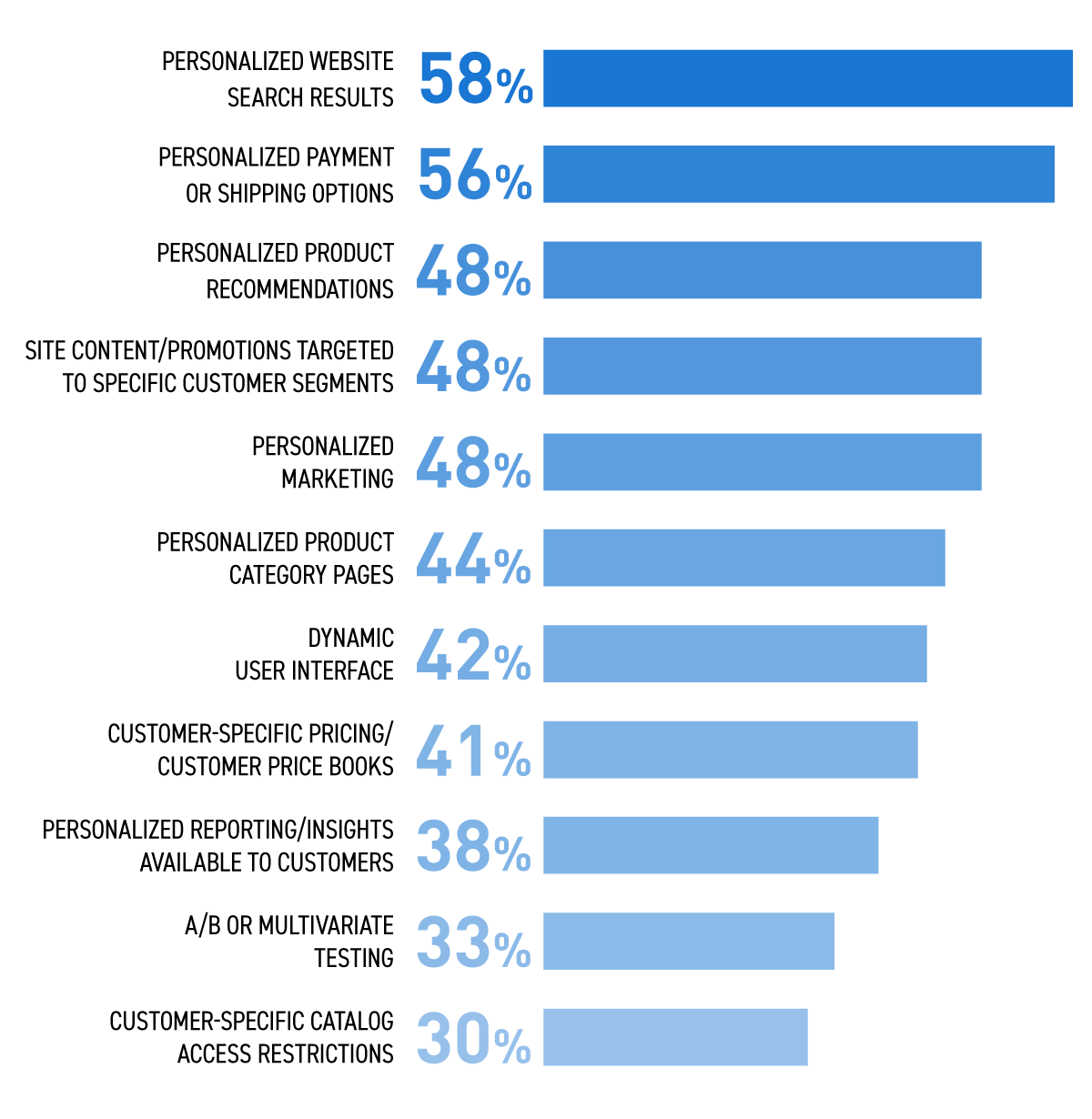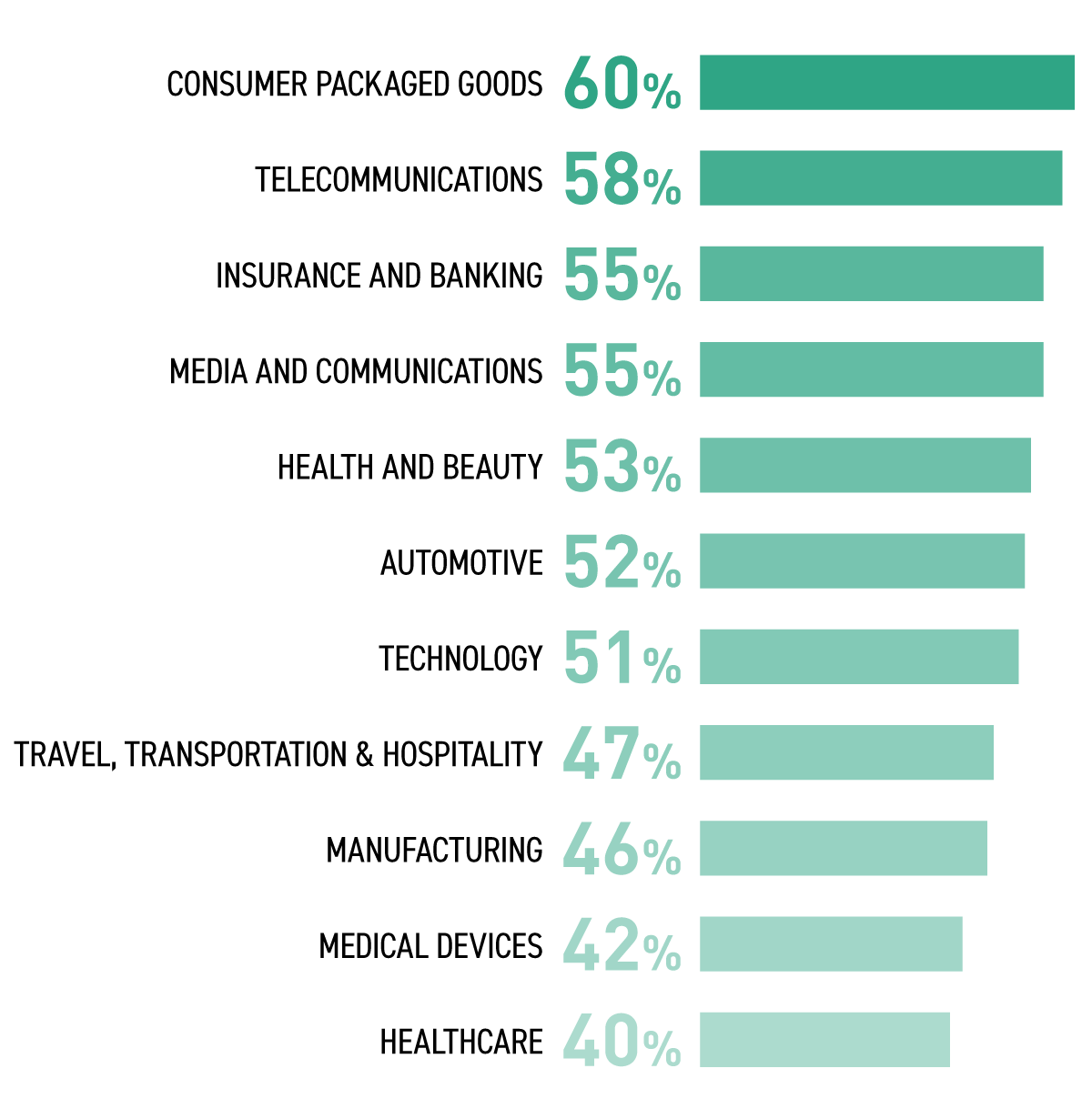
Embracing B2B Consumerization: A Vital Business Imperative
Digital convenience, once a hallmark of consumer shopping, has become an essential expectation in the world of B2B e-commerce.
The trend, often referred to as B2B consumerization, has been reshaping the way business buyers interact with suppliers. While B2B transactions retain their unique complexity, the demand for a seamless, personalized online experience aligns with the best practices of B2C commerce. This shift sets a high bar for B2B e-commerce platforms, where user-centric design and efficiency become not just desirable but essential.
Customer self-service
One of the most critical aspects of this transformation is the demand of B2B customers for comprehensive digital self-service.
Forrester found that a lack of digital experiences in the buying journey is the primary reason B2B buyers switch suppliers.
Importantly, business buyers now expect digital experiences that cover every stage of their purchase journey. From the initial product discovery and exploration to placing orders and receiving post-sales support; everything needs to be accessible online.
This change requires B2B companies not only to offer a range of relevant digital services but also ensure these services are available 24/7, mirroring the convenience of the B2C model.
“The foundation of digital self-service is process automation, and this can only be achieved through proper system integration,” says Mariusz Święs, Chief Architect at Striped Giraffe. “Take, for example, placing an online order. A seemingly simple operation that, if developed right, can be accomplished with a few clicks, actually involves a number of different IT systems.”
E-commerce system retrieves product prices and customer-specific discounts from the ERP, while product availability is checked in an inventory management system. Customer billing data and delivery addresses are sourced from the CRM, and shipping terms are determined either in coordination with the logistics system or through integration with a third-party delivery company. On top of that, there is also integration with external payment gateways, payment processing services or digital payment platforms.
“Throughout this entire process, seamless integration and real-time data exchange between all these systems ensures a smooth and hassle-free experience for your customers,” Święs says. “By automating these steps and leveraging technology effectively, you can streamline the order placement process and deliver exceptional self-service to your valued clients.”

Ease of use
Closely linked to the need for comprehensive digital services is buyers’ expectation for B2B e-commerce platforms to offer effortless usability, ensuring swift and hassle-free task completion.
B2B customers are seeking the same level of simplicity and intuitiveness they are accustomed to on B2C platforms. This means B2B websites must be user-friendly, with well-designed UI/UX elements that make navigation, product selection, and purchase processes straightforward. It is crucial that these platforms are rigorously tested and optimized to remove any friction in the customer journey.
Personalization
Creating more personalized e-commerce experiences is the fourth most important challenge facing B2B sellers in 2024 and beyond, according to a recent Digital Commerce 360 survey.
In contrast to retail, the focus here is less on the individual preferences of buyers and more on the business requirements and strategic goals of the customer companies. While personal interests and emotions often shape purchasing decisions in the B2C sector, in the B2B sector it is more likely to be operational needs and the purchasing behavior of companies.
To achieve effective personalization, B2B sellers must be able to use the full range of data from all customer touchpoints, including offline channels. It is crucial that sales and customer service staff are equipped with the right digital tools to ensure that every interaction contributes to the creation of a comprehensive customer profile.
The integration and analysis of this data, facilitated by Customer Data Platforms (CDP), allows for a nuanced understanding of each client’s needs.
There are many ways to personalize digital experiences of business customers.
“A classic example is personalized product recommendations,” Święs says. “In their simplest form, they are based on purchase history, but they can also use predictive analytics, which incorporates all available customer data to anticipate their future needs with high accuracy.”
According to respondents to the Digital Commerce 360 survey, personalized product recommendations ranked among the three most effective personalization tactics, along with personalized payment or shipping options as well as site content or promotions targeted to specific customer segments (Figure 1).
Figure 1. Personalization tactics that work best in B2B

Source: Digital Commerce 360 survey of B2B sellers. Respondents could choose multiple answers.
Mobile commerce
When discussing the consumerization trend in B2B, the accessibility of e-commerce platforms on mobile devices cannot be overlooked.
Business customers increasingly seek the ability to engage with e-commerce sites just as effectively on their mobile devices as they do on desktop computers. This shift reflects the convenience and immediacy which users experience in their private online transactions.
The importance of a mobile-first approach is accentuated by the growing number of business professionals who rely on smartphones and tablets for everything from research to purchases to acquiring support and post-sales services.
According to a recent survey by VML, two-thirds of B2B buyers wish their suppliers offered a better mobile experience, while 71% wish they could get things done more easily on their mobile devices.
This trend is particularly noticeable among younger, digital-native and tech-savvy business leaders, who are more likely to rely heavily on their mobile devices for professional purposes.
“In sectors like construction or field services, where professionals often operate away from traditional offices, the necessity for mobile-optimized digital services becomes paramount,” says Mariusz Święs. “For such clients, responsive web design and mobile-friendly interfaces are critical, ensuring that all digital services and content are effortlessly accessible on mobile devices, catering to the needs of users who are constantly on-the-go.”

Product content
Traditionally, B2B websites have been focused on providing basic product information, often supplemented with downloadable files containing vast catalogs, product sheets or detailed technical specifications. However, in today’s landscape, B2B customers are seeking the experience they know from B2C webstores, where the product content available for online exploration is comprehensive and diverse.
B2B customers expect to find detailed descriptions and specifications, high-quality images, and informative videos directly on product detail pages. This demand extends to interactive features such as 3D models and product configurators, empowering buyers to visualize and customize products to their exact needs.
Furthermore, B2B buyers want access to user-generated content, including reviews and testimonials, to gain insights from peers and other industry professionals. Additionally, the inclusion of guides, articles, and inspirational content further enriches the browsing experience, providing valuable resources and ideas for decision-making.
“Our B2B clients recognize the critical role of proper content management in digital commerce. When selecting an e-commerce solution, they pay close attention to its content management capabilities, or consider integrating it with a content management system (CMS). Many opt for a digital asset management (DAM) system, which offers more than just storage and distribution. These systems enable the management of the entire content creation process, ensuring that the content is not only accessible but also consistently aligned with their brand across various channels,” explains Mariusz Święs.
Social commerce
Another pivotal element in this new B2B landscape is the role of social media.
Once considered a purely B2C domain, social media has now become a vital platform for B2B interactions. Business buyers are increasingly turning to these platforms for product discovery, user reviews, and even to engage with potential suppliers. For B2B sellers, this means not only maintaining an active social media presence but also integrating these platforms with their e-commerce systems.
A recent Salesforce study showed that already an average of half of B2B companies are selling through shoppable social media posts or ads, with some industries having a significantly higher share (Figure 2). What’s more, over half of B2B brands (55%) admitted that they are investing in their social media presence. For those lagging behind, this serves as a clear indicator to recognize the significance of social commerce and act now.
Figure 2. B2B companies that sell through shoppable social media posts or ads (by industry)

Source: State of Commerce, Salesforce, 2024
Visual design
The days of utilitarian, basic web designs in B2B e-commerce are long gone. Today, business buyers expect a visual experience that rivals the best of B2C sites.
This is especially true for industries where the product’s visual presentation is paramount, including fashion, health and beauty, furniture, hospitality, luxury goods, real estate, and many more.
A well-designed and visually appealing website signals quality and professionalism to business customers. It not only attracts buyers but also reflects positively on the brand’s image and the perceived quality of its products.
Your website serves as a primary marketing tool, making a strong first impression on potential clients. According to a study by Stanford University, 94% of first impressions of a website are related to web design. This underscores the importance of investing in a visually compelling online presence that captures attention and instills confidence in your offerings.
Conclusion
In conclusion, the consumerization of B2B is not just a fleeting trend but a fundamental shift in the way businesses purchase and interact with suppliers. It is a call to action for B2B sellers to rethink and revamp their digital strategies, ensuring they meet the evolving expectations of their customers. By embracing these changes and adapting to the new digital norms, businesses can stay ahead in this new era of B2B e-commerce.

